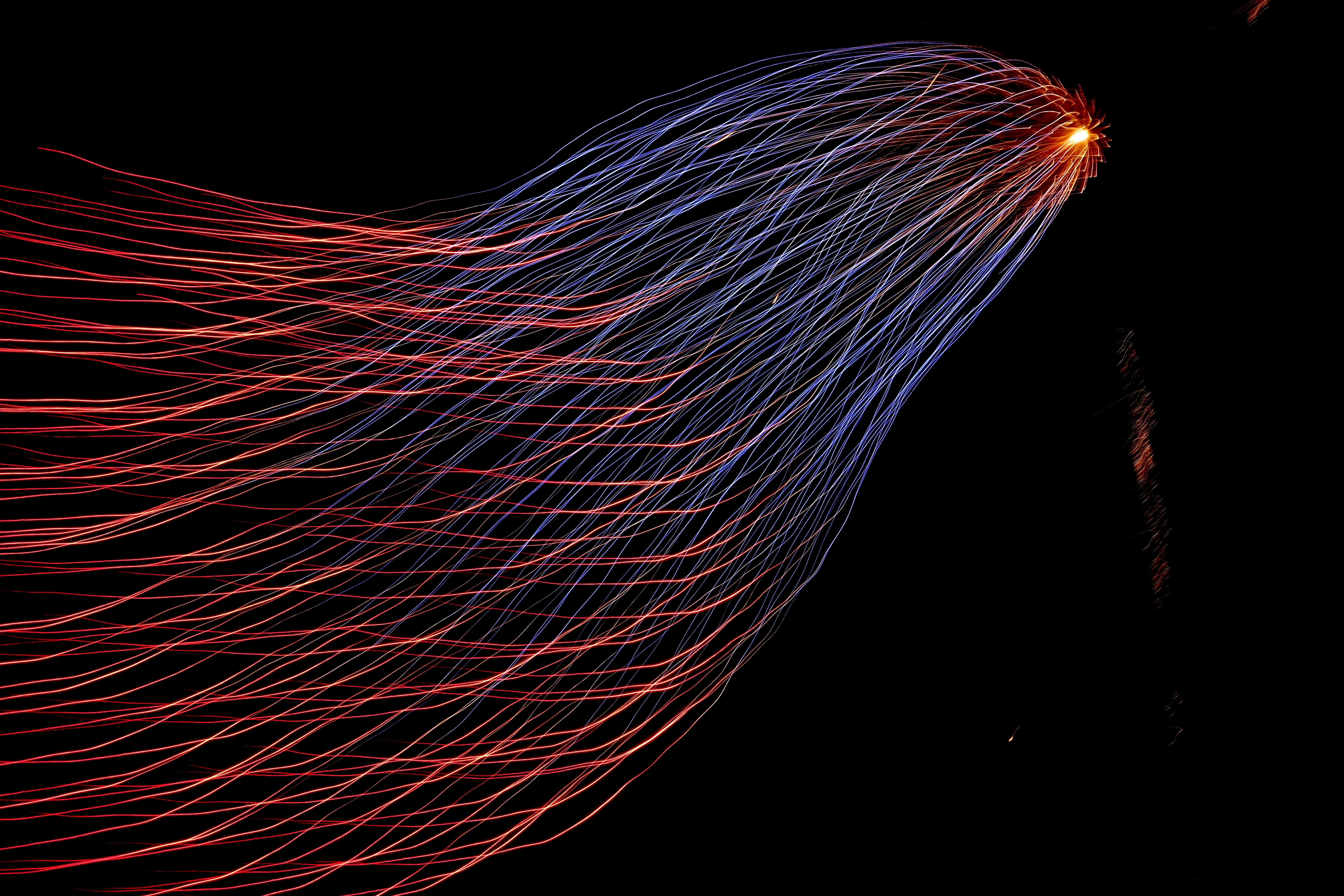You’ve read about why Network Detection and Response is more than just rebranded IDS, and maybe you’re convinced that NDR technology could help your organization. But here’s where most NDR implementations go wrong: they focus on the technology first and the program second.
The most effective NDR deployments aren’t just about buying the right platform – they’re about building comprehensive network threat detection programs that integrate people, processes, and technology. After working with organizations through successful (and unsuccessful) NDR implementations, we’ve learned what separates programs that add real value from expensive monitoring tools that generate alerts no one acts on.
The Program-First Approach
Start with Threat Modeling, Not Technology
Most organizations begin NDR evaluation by comparing vendor features and deployment architectures. Successful organizations start by understanding what network-based threats they need to detect.
Key questions to answer first:
- What are your most critical network segments and data flows?
- Which attacks would be most damaging if they succeeded undetected?
- Where do you have visibility gaps in your current security monitoring?
- What network behaviors would indicate compromise in your environment?
Example threat scenarios for your industry:
- Financial services: Unauthorized access to trading systems, data exfiltration from customer databases
- Healthcare: Lateral movement to medical devices, ransomware targeting patient systems
- Manufacturing: Compromise of industrial control systems, intellectual property theft
- Technology: Supply chain attacks through development environments, insider threats accessing source code
Define Success Metrics Before Implementation
Traditional approach: Implement NDR, then figure out how to measure its effectiveness. Better approach: Define what success looks like, then build the program to achieve it.
Meaningful NDR program metrics:
- Detection coverage: Percentage of critical network segments with effective monitoring
- Threat hunting effectiveness: Frequency and quality of proactive threat discoveries
- Response integration: Time from NDR alert to initial incident response action
- False positive management: Ratio of actionable alerts to total alerts generated
Building Your NDR Foundation
Network Architecture Assessment
Before deploying any NDR technology, understand your network’s security architecture:
Critical network inventory:
- Network segmentation boundaries and enforcement mechanisms
- Critical data flows between network segments
- External network connections and their security controls
- Network devices and their logging capabilities
Visibility gap analysis:
- Traffic flows that bypass existing security monitoring
- Network segments with limited or no security visibility
- Critical systems that communicate outside normal business hours
- Backup and administrative networks that might be overlooked
Skills and Team Development
NDR success requires specific skills that many security teams haven’t developed:
Network forensics capabilities:
- Network protocol analysis and troubleshooting
- Traffic flow analysis and pattern recognition
- Network metadata interpretation and correlation
- Understanding of normal vs. suspicious network behaviors
Threat hunting methodologies:
- Hypothesis-driven investigation techniques
- Network-based indicators of compromise (IoCs)
- Attack technique analysis (MITRE ATT&CK framework)
- Integration of network data with other security telemetry
Tool-specific expertise:
- NDR platform administration and tuning
- Custom detection rule development
- Network data query and analysis techniques
- Integration with existing security tools and workflows
NDR Implementation Strategy
Phase 1: Establish Network Baseline (Weeks 1-4)
Deployment priorities:
- Critical network segments first – Focus on high-value targets and sensitive data flows
- Passive monitoring deployment – Network taps or span ports to avoid operational impact
- Baseline establishment – Allow NDR platform to learn normal network behaviors
- Initial tuning – Adjust sensitivity levels to reduce false positives
Success criteria for Phase 1:
- NDR platform successfully ingesting network data from critical segments
- Initial baseline established with reasonable false positive rates
- Security team trained on basic NDR platform operation
- Integration with existing security tools and ticketing systems
Phase 2: Detection Development (Weeks 5-12)
Custom detection priorities:
- High-impact, low-complexity detections – Rules that catch serious threats with minimal tuning
- Organization-specific behaviors – Detections based on your unique network environment
- Threat intelligence integration – Rules based on current threat landscape for your industry
- Lateral movement detection – Focus on east-west traffic patterns indicating compromise
Detection development process:
- Hypothesis formation: What network behaviors would indicate specific attacks?
- Rule development: Create detections that identify those behaviors
- Testing and validation: Verify detections work without excessive false positives
- Documentation: Record rationale, expected triggers, and response procedures
Phase 3: Threat Hunting Integration (Weeks 8-16)
Proactive hunting capabilities:
- Scheduled hunting activities – Regular searches for suspicious network patterns
- Threat intelligence integration – Hunting based on current threat reporting
- Historical analysis – Investigation of past network data for missed threats
- Cross-platform correlation – Combining network data with endpoint and identity telemetry
Hunting process development:
- Hunting hypothesis creation based on threat intelligence and risk assessment
- Investigation playbooks for common network-based threat scenarios
- Evidence collection procedures for potential incidents discovered through hunting
- Knowledge sharing processes to improve team hunting capabilities over time
Common Implementation Challenges
Alert Fatigue and False Positives
The problem: NDR platforms can generate high volumes of low-quality alerts, especially during initial deployment.
Solutions:
- Gradual sensitivity tuning – Start with high thresholds and gradually increase sensitivity
- Environmental customization – Tailor detections to your specific network environment
- Tiered alerting – Different response procedures for different alert severity levels
- Continuous feedback loops – Regular review and adjustment of detection rules
Skills Gap and Training
The problem: Network-based threat hunting requires specialized skills that many security teams lack.
Solutions:
- Gradual skill development – Start with basic network analysis and build complexity over time
- External training programs – Invest in formal network security and threat hunting training
- Vendor support – Leverage NDR vendor professional services during initial implementation
- Community engagement – Participate in threat hunting communities and conferences
Integration with Existing Security Operations
The problem: NDR often generates different types of alerts and evidence than other security tools.
Solutions:
- Playbook development – Create specific procedures for NDR-generated alerts
- Cross-training initiatives – Ensure security analysts understand network-based investigations
- Tool integration – Connect NDR platforms with existing SIEM and ticketing systems
- Workflow optimization – Adjust security operations processes to incorporate network analysis
Advanced NDR Program Capabilities
Threat Intelligence Integration
Beyond basic IoC matching, mature NDR programs integrate threat intelligence strategically:
- Industry-specific threat feeds that inform detection development
- Attribution analysis connecting network patterns to known threat actors
- Campaign tracking identifying related network activities across time
- Predictive hunting based on threat actor tactics, techniques, and procedures
Cross-Platform Correlation
Network data becomes more powerful when combined with other security telemetry:
- Endpoint correlation – Combining network and host-based evidence
- Identity analysis – Connecting network activity to user behavior
- Cloud integration – Extending network analysis to cloud environments
- Business context – Incorporating business processes and data classification
Automation and Orchestration
Mature NDR programs incorporate automation thoughtfully:
- Automated evidence collection for network-based incidents
- Dynamic response capabilities that adapt to different threat scenarios
- Workflow automation for routine investigation tasks
- Quality assurance automation for detection rule effectiveness
Measuring Program Maturity
Level 1: Basic Monitoring
Characteristics:
- NDR platform deployed and generating alerts
- Security team responds to high-priority alerts
- Basic network visibility established
- Initial false positive management in place
Typical timeline: 3-6 months after initial deployment
Level 2: Active Hunting
Characteristics:
- Proactive threat hunting based on network analysis
- Custom detections developed for organization-specific threats
- Integration with broader security operations
- Regular assessment and improvement of detection capabilities
Typical timeline: 6-12 months after initial deployment
Level 3: Integrated Operations
Characteristics:
- Network analysis fully integrated with incident response procedures
- Cross-platform correlation with endpoint and identity data
- Threat intelligence integration driving hunting and detection priorities
- Automation reducing manual investigation tasks
Typical timeline: 12-18 months after initial deployment
Level 4: Strategic Security Program
Characteristics:
- NDR insights informing broader security strategy and architecture decisions
- Predictive analysis and threat forecasting capabilities
- Advanced automation and orchestration reducing response times
- Continuous program optimization based on threat landscape evolution
Typical timeline: 18+ months after initial deployment
Avoiding Common Pitfalls
Technology-First Implementation
The pitfall: Focusing on NDR platform capabilities rather than security program needs. Better approach: Define program requirements first, then select technology that enables those capabilities.
Isolated Deployment
The pitfall: Implementing NDR as a separate security function disconnected from existing operations. Better approach: Integrate NDR with existing security operations from the beginning.
Passive Monitoring Mindset
The pitfall: Treating NDR like traditional IDS – deploy and wait for alerts. Better approach: Use NDR as an active threat hunting and investigation platform.
Insufficient Investment in People
The pitfall: Expecting technology to deliver results without corresponding investment in skills and processes. Better approach: Invest in training, process development, and organizational change alongside technology.
Building for Long-Term Success
Continuous Improvement Framework
Successful NDR programs evolve continuously:
- Regular assessment of detection effectiveness and coverage gaps
- Threat landscape monitoring to identify new detection requirements
- Skills development to keep pace with evolving threat hunting techniques
- Technology evaluation to ensure platforms meet changing requirements
Organizational Integration
NDR programs succeed when they become integral to broader security operations:
- Executive reporting that demonstrates business value and risk reduction
- Cross-functional collaboration with IT operations, business units, and external partners
- Strategic planning that incorporates network security insights into business decisions
- Cultural integration where network security awareness becomes part of organizational thinking
The Path Forward
Building effective NDR programs requires patience, investment, and organizational commitment. The technology is powerful, but success depends on developing the right skills, processes, and organizational culture to use it effectively.
Start with clear goals, invest in your people as much as your technology, and plan for gradual capability development over time. The organizations that approach NDR as a program rather than a product see the most significant security improvements.
What’s Next?
Ready to move beyond NDR technology evaluation to building a comprehensive network threat detection program? Start by assessing your current network security capabilities and threat landscape.
If you need help designing an NDR program that fits your organization’s needs and constraints, let’s talk. We specialize in helping organizations build practical, effective network security programs that integrate with existing operations and deliver measurable security improvements.
The difference between NDR success and failure isn’t in the technology – it’s in how thoughtfully you build the program around it.



